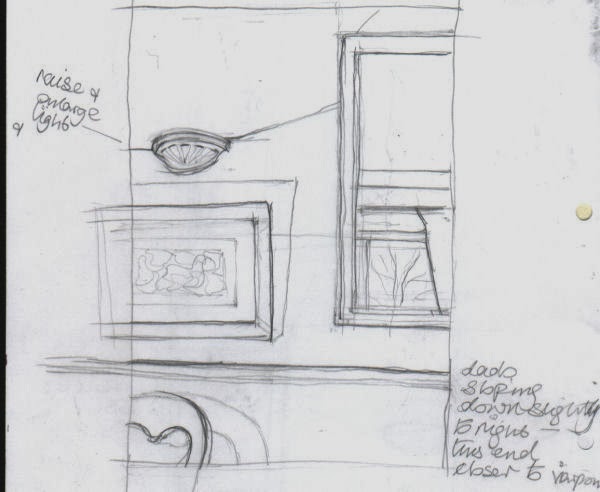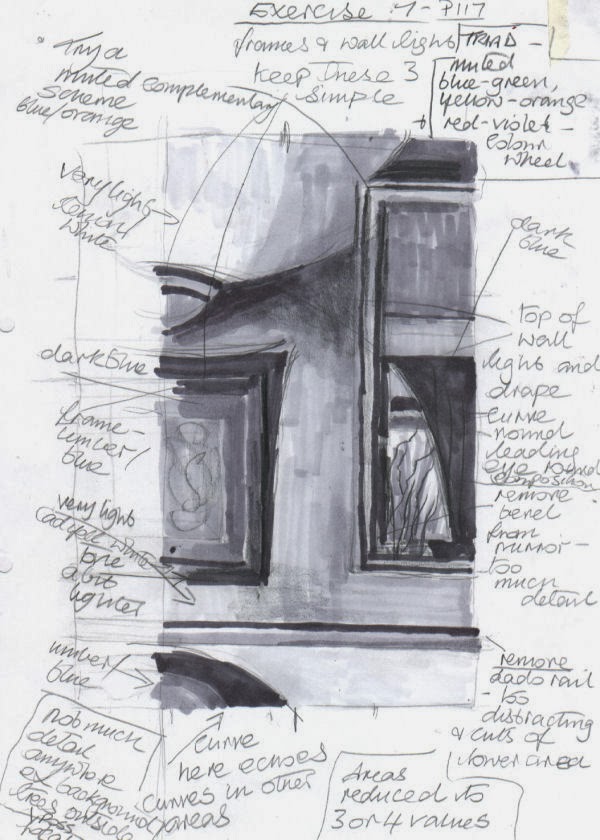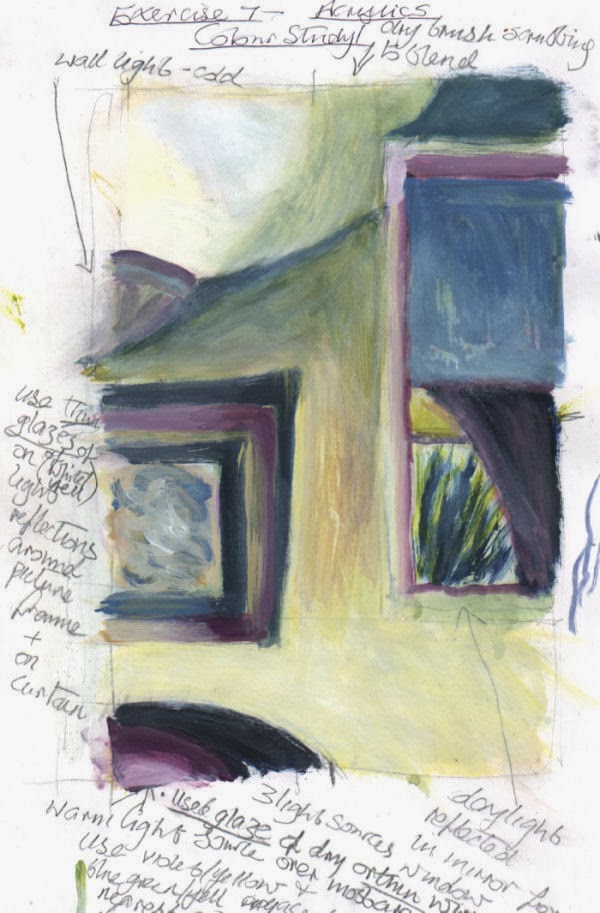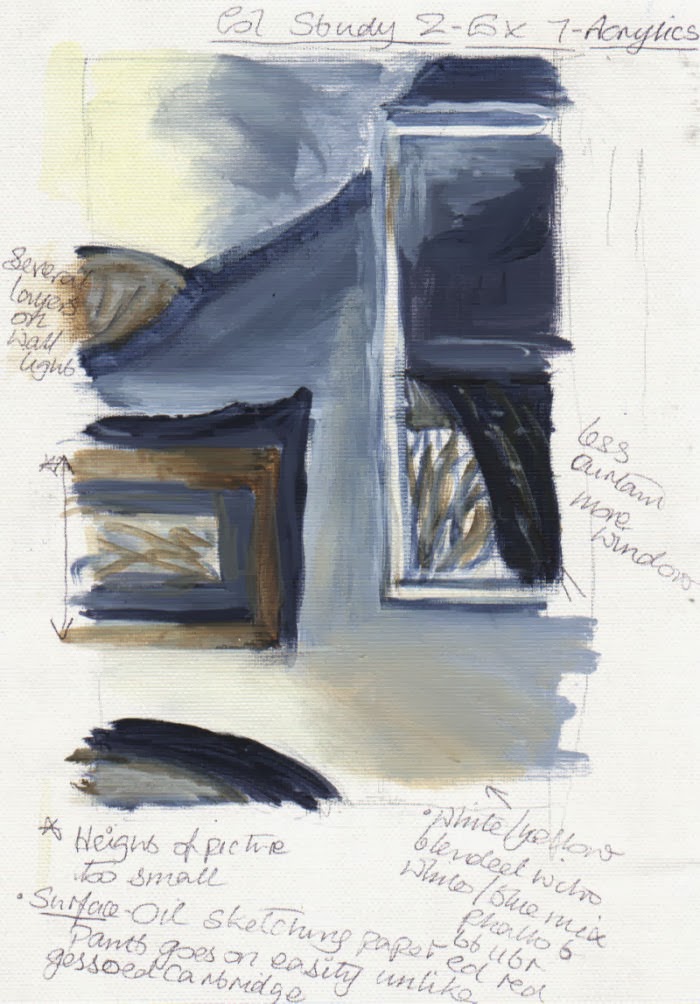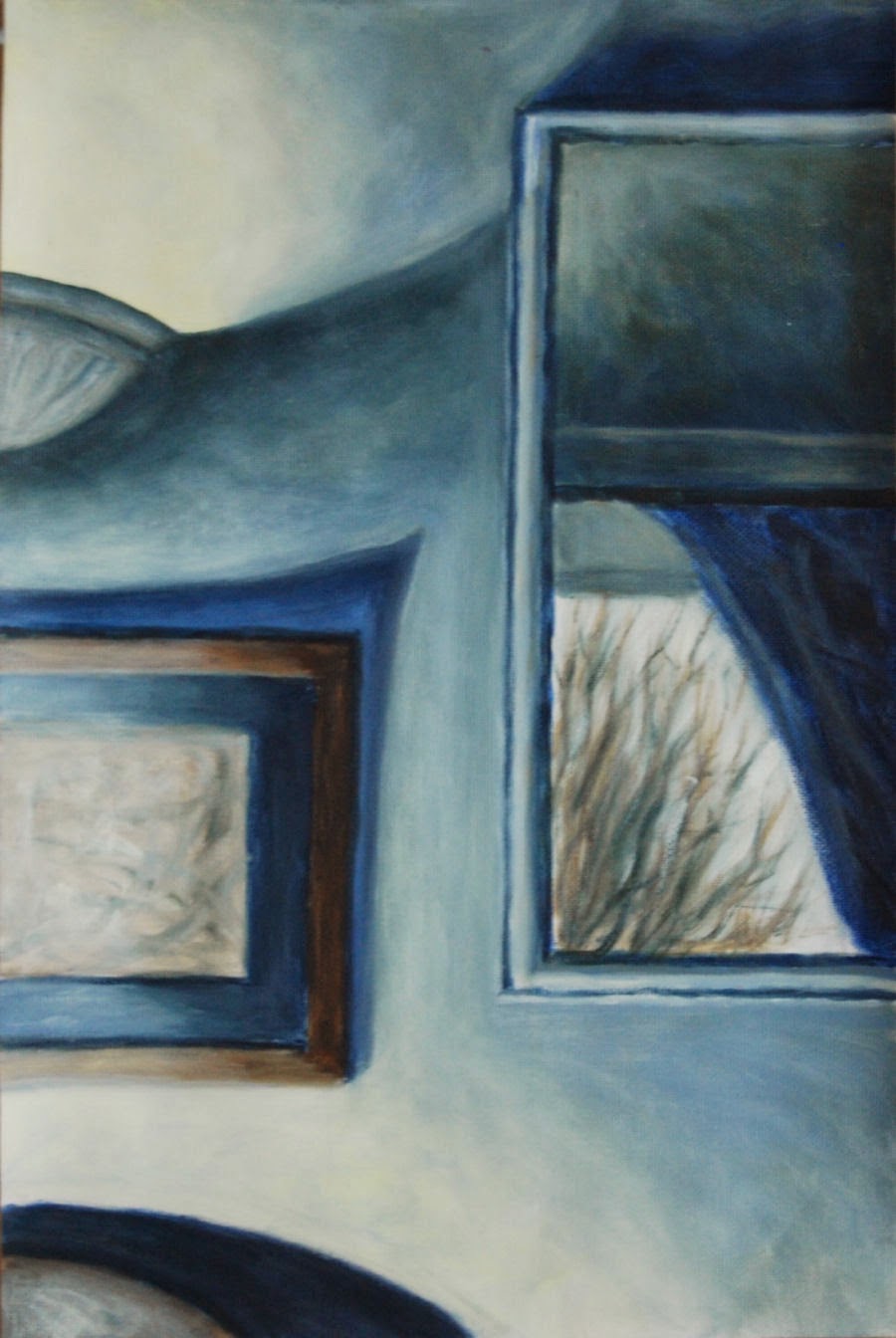Expressive Landscape
1.After WW2 the Surrealist
Max Ernst moved to Arizona where he began to paint strange landscapes. In 'Europe after the Rain 2', 1941 he used a collage technique which he had invented, called decalcomania. This produces a multilayered effect by pressing gouache onto a surface with paper. After his bad experiences in Europe during the war he produced this painting very reminiscent of the war. It portrays a twisted landscape in which there appears to be inhabited by ruins, broken figures and wreckage. If this is what the painting is about, it is a powerful denouncement of the ravages of war.
http://uploads7.wikipaintings.org/images/max-ernst/europe-after-the-rain-ii(1).jpg
Giorgio de Chirico I will have to assume this is the original as there are many copies out there apparently:
http://lucaantara.blogspot.ie/2005/11/enigma-of-autumn-afternoon.html
Founded the style of Metaphysical painting in the early 1900s. Had a profound influence on the Surrealists. His early paintings juxtaposed the familiar with the strange or fantastical. This was partly due to influences of Arnold Bocklin and Max Klinger. His paintings became more realistic in style from the 1920s onwards.
The early paintings such as 'Enigma of an Autumn Afternoon' 1910 are strange simplified scenes of old towns, with large empty spaces occasionally inhabited by one or two isolated figures, pieces of old classical sculpture, buildings with exaggerated perspective and foreshortening. Usually the colours are sombre greens, greys and ochres. There is either a distant view, sometimes containing a train in the distance going across a landscape. Sometimes there is a high wall, behind which might be the top of a figure or other object and long shadows as in 'The Long Shadows of an Afternoon'. The skies are dark, dramatic and threatening.
Salvador Dali a Surrealist noted as one of the most versatile artists of the 20th century who was successful in many areas from sculpture to fashion design. He was fascinated by classical and Renaissance art, evident in his style of hyper realism. He built up very detailed images with thin layers of paint using thin brushes. The themes he used were symbolic of eroticism, death and decay, influenced by Freuds's theories on psychoanalysis.
2.
Paul Nash 'Pillar and Moon'. Nash had an interest in Surrealism. He often placed apparently unrelated objects together in unusual situations, although this isn't as mark in this painting.
http://www.tate.org.uk/art/artworks/nash-pillar-and-moon-n05392
Nash was interested in Surrealism and was very affected by his experiences of World War as a soldier and artist. His landscapes were largely symbolic and he often placed apparently unrelated objects together in unusual situations. In 'Pillar and Moon' this isn't as apparent as in others. Dominating the scene is a tall stone crumbling pale toned old pillar with a sphere on the top which is situated almost centrally and reaches almost to the top of the painting. To the right, on the same level is a white yellow ringed full moon in a mid blue sky. This seems to set up a sort of mysterious connection between the two. At the base of the pillar is a stone wall going across from one side to the other. Behind the pillar are lines of tall bare trees receding into the distance, again going across the whole composition. The moon casts a yellow eerie glow onto the large empty space on both sides of the trees. The colours are muted blues, greys, reds and ochres. There is a diagonal downward slope on the far right of the wall, echoing the shadows cast by the trees on the banking filling the large empty space behind it. This combination sets up a desolate looking lonely kind of scene.
John Piper
http://www.tate.org.uk/art/artworks/piper-glaciated-rocks-nant-ffrancon-t06446
Graham Sutherland who, as well as Nash, was also affected by his experiences of World War I. Many of his landscapes contain contorted forms and appear to portray nature's constant struggle.
'Entrance to a Lane' 1939 is semi-abstract in appearance. A certain feeling of tension existing between the elements. It shows a small arched entrance or doorway in the centre with bright toned small amorphous shapes above and to its right suggesting a light source. This is enveloped in tightly knit overhanging shapes in muted colours and tones. The overhanging dark branches and leaves are the only indication that they are trees forming and arched entrance as the forms are more like smooth bending walls. The directional lines and shapes of the 'walls' wrap themselves around the scene like a protective blanket emerge outwards with a strong linear perspective, towards the viewer. On the left, underneath a mysterious object hanging from a branch, and inside a long dark menacing looking shadow, there is a strange reflection from the yellow area in the entrance.
https://www.tate.org.uk/art/artworks/sutherland-entrance-to-a-lane-n06190
3.
Gustav Klimt's symbolist landscapes have a characteristically square format and standard size. Many of his woodland paintings appear quite flattened, highly stylized and full of intricate patterning, rather similar to his portraits. 'Fir Forest II' is one such scene - quite dark and claustrophobic, containing a multitude of tall narrow trees, with only small glimmers of light towards the top. The colours are uniformly muted greens and browns and the tree trunks appear to merge into one another. Although it is very detailed and I think, is a good example of his pointillist technique:
http://www.klimt.com/en/gallery/landscapes/klimt-tannenwald2-1901.ihtml
'Roses Under the Trees' 1905 is another example of pointillism. This time the colours are more cheerful, though still a flattened composition devoid of light and shadow:
was for a short time, a member of the Die Brucke group of German Expressionists. When I googled Nolde's landscapes I was taken aback by a veritable feast for the eyes at the stunning vibrancy of colours on display.
During the 1910s Nolde painted powerful almost abstract seascapes in oils,. In 'The Sea III' 1913 depicts an unsettled deep blue sea with dramatically defined surf capped waves rising up in sharp peaks to a high horizon. Moving forwards the waves, topped by chunky white ridges of surf containing hints of green and yellow from the sky, decidedly increase in size, as do the dark and deeply undulating spaces underneath and between. The effect is increased by the use of thickly applied paint. The sky is a relatively small area, but still has great impact as it has been painted in a vivid green over dark blue and contrasts with the dark blue of the sea. To me, these elements combined promote such a strong impression of movement, that if I looked at this image for long enough I could imagine getting sea sickness.
http://www.thearttribune.com/spip.php?page=docbig&id_document=1341
Here is a vivid landscape depicting an isolated vivid and dramatic landscape. I think it has a great sense of space resulting from the large flat area of green, while also claustrophobic from the dark low looming sky:
http://www.thearttribune.com/spip.php?page=docbig&id_document=1337
J
 I wanted to use a photograph containing linear perspective to find out if using a grid would make it easier to obtain accuracy. I tried this out with a black and white photo of an art installation, part of which I had cropped from an art journal. I also replaced one or two elements with others taken from another part of the complete photo.
I wanted to use a photograph containing linear perspective to find out if using a grid would make it easier to obtain accuracy. I tried this out with a black and white photo of an art installation, part of which I had cropped from an art journal. I also replaced one or two elements with others taken from another part of the complete photo.

